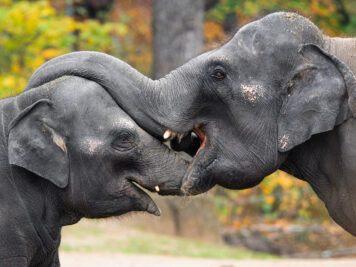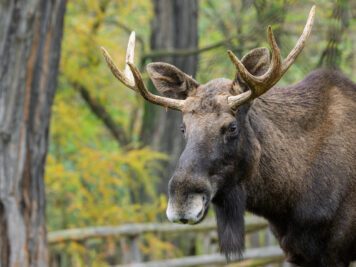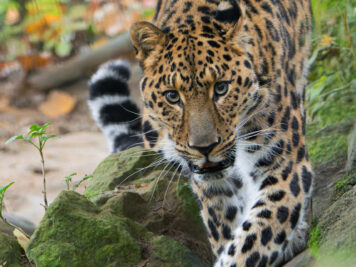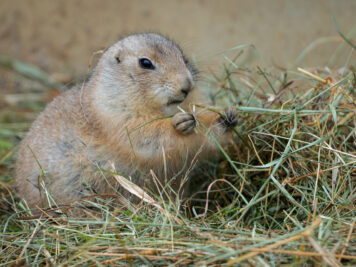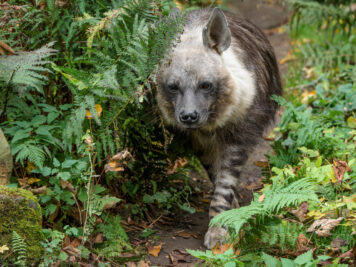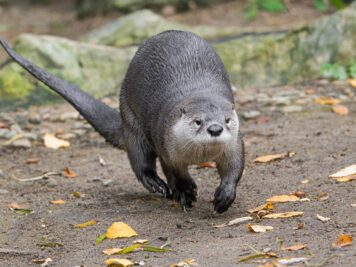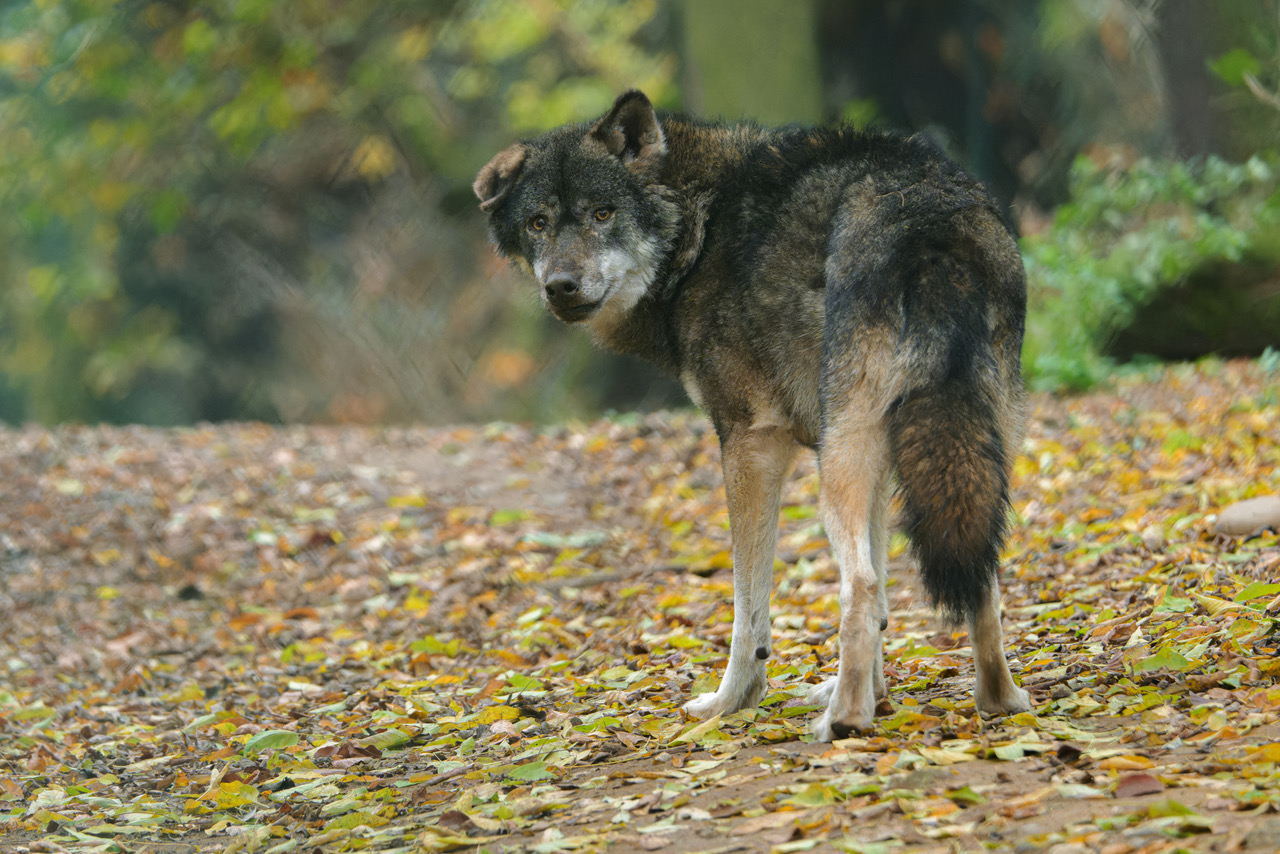
The wolf pack begins to grow winter fur, which protects these animals from the cold. This is due to its special arrangement, which creates a kind of mantle on key parts of the body, along which water flows. Pictured is a male Eurasian Grim wolf. Photo by Petr Hamerník, Prague Zoo
The Prague Zoo invites you to visit even during dry weather. Animals grow winter fur and many of them can be proud of their bushy coats. Fallen leaves diversify the diet of many species and at the same time provide an impressive backdrop for the eyes of visitors and the lenses of photographers. While moose, wolves, or Manchurian leopards enjoy the November weather, people can warm up immediately after observing them in fifteen heated pavilions.
The just-launched mobile application of the Prague Zoo also encourages you to visit, which offers tickets at a favorable price, facilitates movement in the area, and contains a number of other functions, including medallions of bred species or notifications about their feeding. Commented feeding and meetings with the animals currently take place during the weekend days.
The Prague Zoo complex is open from 9 a.m. to 4 p.m. in November. At 5 p.m., the Light Zoo opens its doors, featuring 110 giant lanterns in the form of African animals and plants, interactive projections, and a 70-meter-long light tunnel. People can find the light zoo in the lower part of the complex, and there is a separate entrance and entrance fee for it.
The popular cable car connecting the lower and upper parts of the Prague Zoo remains exceptionally open this year, not only on weekends but also on weekdays, until January.
Lower temperatures are not a problem for Indian elephants. He currently spends time in the outdoor enclosures of the Elephant Valley, usually between 11 a.m. and 2 p.m. The picture shows the youngest member of the herd, four-year-old Lakuna (left), with her nineteen-year-old mother Tamara (right). Photo by Petr Hamerník, Prague Zoo
A pair of moose – male Loki (pictured) and female Freya – enjoy the autumn atmosphere. They also grow thicker fur for the winter, which is not as dull compared to the summer fur. People can find these largest representatives of deer in the Northern Forest exhibition complex in the upper part of the zoo. Male Loki can be easily recognized by the antlers, which female moose (unlike reindeer) do not have. Photo by Petr Hamerník, Prague Zoo
Most people probably associate leopards with the tropics, but the critically endangered Manchurian leopard – one of the rarest felines on the planet – lives in the cold forests of the Far East. The image shows a charismatic-looking male Manchurian, but no one calls him anything other than Hugo. Photo by Petr Hamerník, Prague Zoo
Prairie dogs are used to harsh North American winters. The Central European ones are easy for them to manage, but even so, a group of these quarrelsome rodents can now be observed lining their burrows with hay. For feeding after 10 o’clock, however, they climb to the surface of their exhibit next to the bison enclosure. Photo by Petr Hamerník, Prague Zoo
The female hyena Jubari is already an elderly lady, but she does not lack appetite or zest for life. Visitors can find chabra hyenas in the enclosure opposite the Elephant Valley, near the Radegast statue in the upper part of the zoo. Photo by Petr Hamerník, Prague Zoo
Otter North American autumn temperatures testify. Their nimble swimming can be well observed during the entire opening hours of the zoo, but best in the morning or during feeding between 2 and 3 p.m. Then they get fish, mice and alternately quail or rabbit for variety. The picture shows the male Cory, who is slightly bigger than his mate Tara. Photo by Petr Hamerník, Prague Zoo



